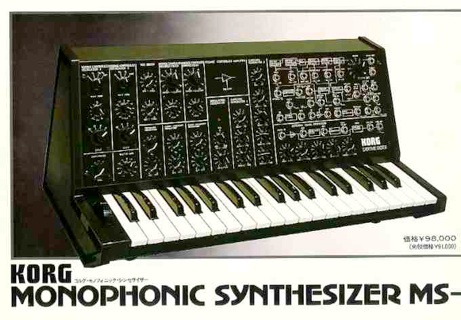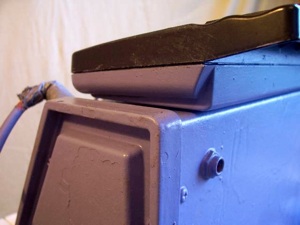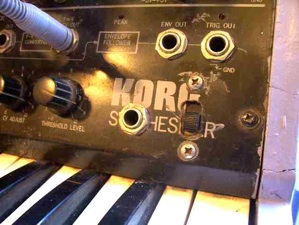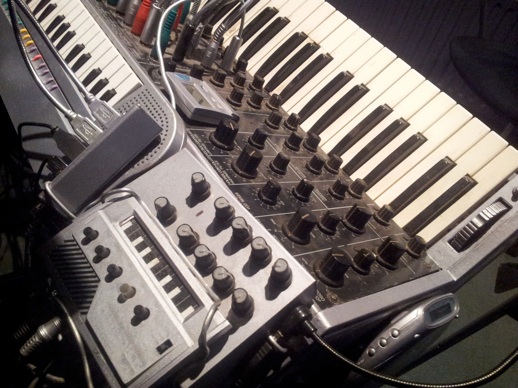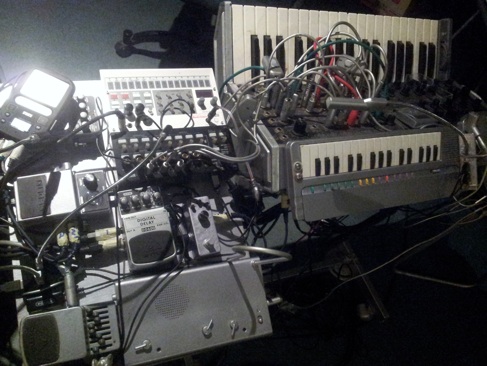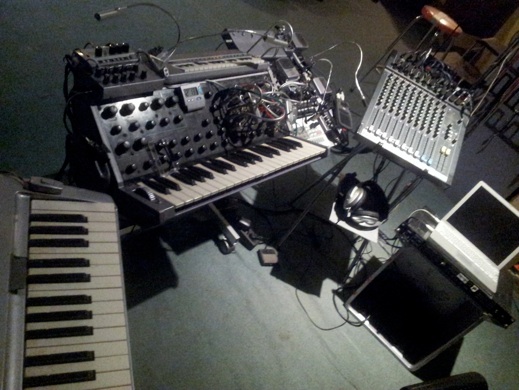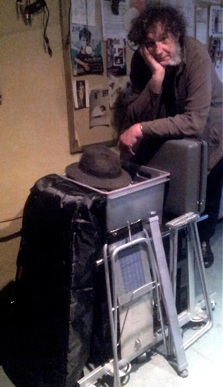
Ultrakorg
First, let's take a look at an original Korg MS20, as released in 1978.
And than, there's “Ultrakorg”.....
Wow! What happened!? Painted silver, tilted and with added-on assesories- its looks like the Korg has moved into the new millennium with a bang!
Let's take a closer look at it. What hasn't changed is the original set-up:
Oscillators: 2 VCO's + noise LFO - One LFO with multiple waveforms
Filter: 2 MultiMode VCFs: Lowpass, Highpass, Notch, BandReject
Envelope: 2 VCAs; Sample and Hold
Keyboard: 36 keys
External signal-processor
Control Voltage & Gate out
The hard-wiring can be overridden using patch-cords (this type of hard-wired but patchable design was similar to the ARP 2600 of the late seventies). Designer patch-cords with splits and switches are used here to create new possibilities.
Date Produced - 1978 - 1983. W bought his as soon as it hit the market.
During the eighties, W used a Roland sequencer (pre- midi!) that didn't allign with the Korg output voltages- positive triggering where the Roland asked for negative. So two extra outputs where created, one at the back and one up front, changing the word synthesizer into SHESIZER. A switch was added to trigger the ms 20 by either the keyboard or the external signal-processor.
The mixer on top is used to choose between sources for the main mixing desk and the external signal-processor of the MS20: a mini-theremin, a Korg Monotron, the attached Casio SA 5 and the screwed-on cd-player. An Apple Powerbook through a Korg Koass Minipad and an iPad with an iVCS3 (his first steps in the world of electronics were on an EMS VCS3 under the guidance of Michel Waisvisz) are fed into a small mixingdesk. A nice detail is the use of a Behringer filterpedal to control the input of the External Signal Prosessor.
HW used to play Ultrakorg in combination with Logic sequencer-software to add loops and plug-ins to enhance the sounds with delays, pitchshifting and the like. Lately, he has switched back to basics, using a looper- and delay-pedals and audio-files. A Korg SQ-1 sequencer (its original predesessor was created for the MS20), and a Korg Volca Sampler are synced by the MS20 (or its external signal processor (!!)).
Which leaves us all with the ethical question: can you transform a noble, classic intrument like a vintage Korg MS20 by drilling holes in it, reconstructing the inside and adding gadgets? To many people, the answer will be a panicky “No!”. Obviously, W holds a different view, which in short boils down to this:
“Life is reshaping us on a daily basis. How can we maintain a static, immobile look at our surroundings? The Korg has influenced me and shaped my music in no small way, and I am simply reacting to that- as if the Korg were alive, and allowed to grow and develop. It’s nice to return a favour once in a while!”
And wasn’t it the great Dutch synth-builder/pioneer/composer Michel Waiszvis who said: “When you don’t open it, you don’t own it?”!!
